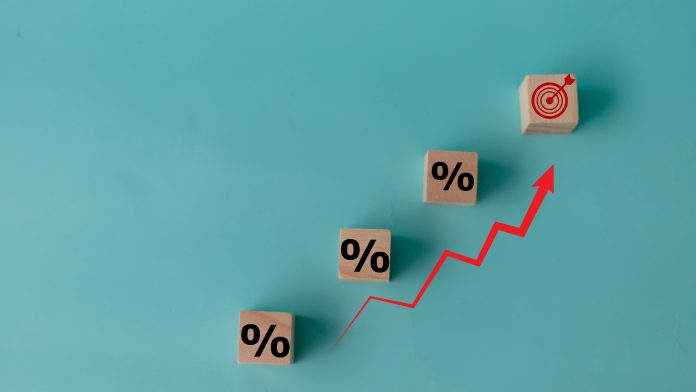Key Takeaways
- Sales Follow-Up Emails Are Essential: This type of communication is crucial for maintaining engagement with potential clients and maximizing conversion opportunities.
- Build Relationships: Personalized follow-up emails help solidify relationships with clients and foster long-term loyalty through consistent communication.
- Timeliness and Frequency Matter: Sending follow-up emails within 24 to 48 hours of initial contact can significantly increase the chances of closing a sale, as many sales require multiple follow-ups.
- Personalization is Key: Addressing recipients by name and referencing specific details about their interests or needs enhances the effectiveness of follow-up emails.
- Clear Call-to-Actions: Incorporating direct and actionable CTAs in your emails guides prospects to the next steps and increases engagement.
- Avoid Common Mistakes: Steer clear of generic messaging and poor timing to ensure your follow-up emails maintain a positive impact and foster ongoing communication with prospects.
In the fast-paced world of sales, following up can make all the difference. A well-crafted follow-up email not only keeps the conversation alive but also reinforces your value to potential clients. It’s your chance to remind them of your previous discussion and nudge them toward making a decision.
You might think of a follow-up email as just a simple reminder, but it’s so much more. It’s an opportunity to build relationships, showcase your expertise, and ultimately close deals. Knowing how to write an effective sales follow-up email can set you apart from the competition and significantly boost your success rate. Let’s dive into the essential elements that make a follow-up email truly impactful.
Importance Of Sales Follow Up Email

Sales follow-up emails play a crucial role in maintaining engagement with potential clients. They serve as a strategic tool to solidify relationships and maximize conversion opportunities.
Building Relationships
Building relationships with clients is essential for small businesses. Follow-up emails allow you to reconnect, express gratitude, and address any concerns. Consistent communication demonstrates your dedication to client success and positions you as a trusted partner. Personalized follow-ups that reflect prior conversations enhance the connection and foster long-term loyalty.
Increasing Conversion Rates
Increasing conversion rates often hinges on timely follow-up emails. Statistics show that 80% of sales require at least five follow-ups to close. By sending well-timed and relevant emails, you reinforce your value proposition and remind clients of your offerings. Engaging content in follow-ups can motivate prospects to take the next step, thereby driving sales and boosting your business’s overall growth.
Best Practices For Crafting A Sales Follow Up Email

Crafting effective sales follow-up emails enhances your engagement with potential clients. Incorporating best practices can make your communications more impactful and effective.
Personalization Techniques
Personalization is crucial for crafting successful follow-up emails.
- Use the Prospect’s Name and Details: Addressing recipients directly by their name, along with specifics about their company or role, builds rapport and shows genuine interest. Mention relevant initiatives they’re involved in to create a strong connection.
- Customer Personas: Develop detailed customer personas to better comprehend your audience’s preferences and interests. Tailor your emails according to these insights, ensuring you meet the unique needs of different market segments.
- Behavior-Triggered Emails: Implement behavior-triggered email automation to send timely follow-ups based on actions taken by prospects, such as signing up for a newsletter or downloading a resource. This approach allows you to engage prospects with content and offers that align with their interactions.
Timing And Frequency
Timing and frequency play pivotal roles in the effectiveness of your follow-up emails.
- Follow-Up Timing: Send follow-ups shortly after initial contact, ideally within 24 to 48 hours. This immediacy reinforces your interest and keeps the conversation fresh in the prospect’s mind.
- Strategic Frequency: Follow up consistently yet respectfully. Studies indicate that closing sales often requires multiple touchpoints, with 80% of sales needing at least five follow-ups. Space these emails to avoid overwhelming your prospects—consider intervals of several days to weeks, depending on previous interactions.
By incorporating personalized content and being strategic with timing and frequency, you strengthen your follow-up email strategy, making it an effective tool for your small business marketing efforts.
Key Components Of An Effective Sales Follow Up Email
Crafting effective sales follow-up emails can significantly enhance your small business’s marketing efforts. Focus on key components to strengthen your engagement with potential clients.
Subject Line Strategies
Create compelling subject lines for your follow-up emails. Use concise, clear wording that sparks interest. Incorporate specific details related to your previous conversation or highlight the value your offering provides. For example, “Quick Follow-Up on Your Interest in [Product]” or “Let’s Discuss [Pain Point] Solutions”. Subject lines that convey urgency or relevance can boost open rates, making your follow-up more effective.
Call-To-Action Design
Design clear and actionable call-to-action (CTA) statements. Use direct language, such as “Schedule a Call” or “Download Your Free Guide.” CTAs should guide prospects to the next step while making it easy to respond. Include links or buttons that stand out visually, ensuring prospects can quickly navigate to your desired action. Effective CTAs increase conversion rates by steering prospects toward engagement and further interaction with your small business.
Common Mistakes To Avoid
Avoiding common mistakes in sales follow-up emails ensures effective communication and maintains a positive relationship with prospects. Two critical areas to focus on include messaging and timing.
Generic Messaging
Avoid sending identical mass emails that lack personalization. Generic messages fail to connect with recipients and often result in disengagement. Personalize each email by incorporating specific details about the prospect. Mention their name, company, or role to show genuine interest. Adding context and value to your emails is crucial. Instead of using phrases like “just following up,” provide meaningful content, such as industry reports, recent company news, or relevant testimonials. This approach not only keeps your communication fresh but also reinforces your credibility as a reliable partner for small businesses.
Poor Timing
Avoid delaying your follow-up emails. Timeliness plays a vital role in the effectiveness of sales communication. Sending follow-ups within 24 to 48 hours of initial contact allows you to stay top-of-mind and demonstrates your commitment. Spaces between follow-ups should be appropriate; too frequent can overwhelm prospects, while too infrequent can lead to loss of interest. Utilize behavior-triggered email automation tools to ensure timely engagements. Implementing a structured follow-up schedule enhances your marketing efforts and increases the likelihood of conversion.
Conclusion
Sales follow-up emails are vital for nurturing relationships and closing deals. By implementing the best practices discussed, you can ensure your emails stand out and resonate with prospects. Personalization and timely communication are key to keeping your leads engaged and moving them through the sales funnel.
Remember that each follow-up is an opportunity to reinforce your value and position yourself as a trusted partner. Avoid common pitfalls like generic messaging and overwhelming frequency. Instead focus on crafting thoughtful, relevant emails that reflect your commitment to addressing your prospects’ needs. With the right approach, your follow-up emails can significantly boost your conversion rates and contribute to your overall business success.
Frequently Asked Questions
Why are follow-up emails important in sales?
Follow-up emails are crucial in sales as they keep conversations alive, reinforce your value, and help build strong relationships with potential clients. They are opportunities to demonstrate expertise and close deals, often increasing conversion rates significantly.
How many follow-ups are typically needed to close a sale?
Research shows that 80% of sales require at least five follow-ups to close. Consistent, timely follow-up emails can reinforce your value proposition and motivate prospects to make a decision.
When should I send a follow-up email after initial contact?
It’s best to send follow-up emails within 24 to 48 hours after the initial contact. This timing keeps your engagement fresh and shows your commitment to the prospect.
What should I include in a follow-up email?
An effective follow-up email should include a compelling subject line, personalized content, and clear calls-to-action (CTA). This structure helps grab attention and guides the prospect toward the next steps.
What are common mistakes to avoid in follow-up emails?
Common mistakes include sending generic, impersonal emails and failing to follow up on time. Personalization and proper timing are essential to engage prospects and prevent disengagement.
How can personalization improve my follow-up emails?
Personalization helps build rapport and shows your prospects that you understand their needs. Use their names, specific details, and customer personas to tailor your emails for maximum impact.
What is behavior-triggered email automation in follow-ups?
Behavior-triggered email automation involves sending follow-ups based on specific actions taken by prospects, ensuring timely communication. This approach can enhance engagement and make follow-up efforts more effective.
How often should I follow up with prospects?
It’s important to space your follow-ups appropriately, avoiding overwhelming prospects. A recommended schedule is to follow up every few days or weeks, depending on the context of your prior interactions.
Image Via Envato



